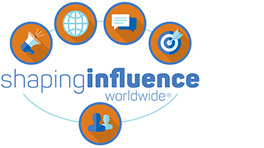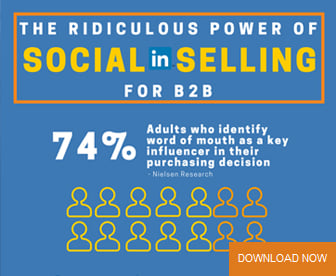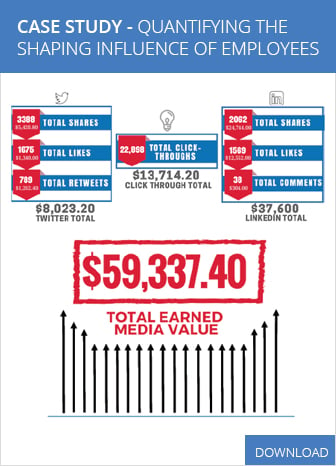How Customer Journey Mapping Fosters Cross-Functional Collaboration
Signing a new customer always feels like a home run; keeping that customer year after year, however, is a different ball game entirely.
If you live in the software-as-a-service (SaaS) world like we do here at Lifesize, then you probably understand the gravity of customer retention. Recurring revenue is key to sustaining any SaaS business, which is why it is critical to understand not just how to win customers, but how to keep them.
In past articles, I’ve talked a lot about the Net Promoter System — my team relies on it heavily to understand the voice of our customers and ensure we are both enabling them to get the most value from of our products and services and delivering positive business outcomes. But another key tool for us is journey mapping — a process by which we outline the entire journey of a customer from the point of initial engagement with our brand onwards, capturing every interaction they have with our company. While it may sound like a daunting task, it’s worth its weight in gold because it serves as a catalyst for building cross-functional collaboration and creating a culture of customer obsession.
Siloed organizations have a very hard time in delivering great experiences for customers. That’s because customers know when there is misalignment between various departments. When the right hand isn’t talking to the left, it’s apparent and it’s the primary reason siloed organizations run into so many issues when serving their customers. For example, Sales doesn’t communicate their customer conversations to Customer Success managers or various departments are bombarding customers with emails without any clear strategy or direction, and so on. At Lifesize, our customer-first approach through journey mapping has enabled us to quickly eradicate siloes and enable collaboration like we’ve never seen before.
Here’s what the process looks like in action.
Engaging with Marketing
How can we better engage with our existing customers through marketing campaigns that really address how they are using our product?
Effective marketing that speaks to your installed base is critical, especially for SaaS companies. Unfortunately, this specific marketing task is easy to de-prioritize. Chances are, most of you have seen email blasts from vendors that are fairly generic and not at all tailored to your specific use of the product. This is exactly what we want to avoid.
The goal is to create targeted messaging that speaks to customer’s specific needs. So, you may consider working with Marketing to address questions like:
- What type of marketing collateral or videos could help support a customer during implementation?
- Are there auto-generated emails that can be shared with specific content that is relevant during specific times throughout the customer’s journey?
It’s also critical to leverage your Marketing and Customer Success systems to allow for a feedback loop. For example, can you identify when a customer opens a specific email or downloads information from your website? This type of data ultimately helps your company have a 360-degree view of the customer’s journey.
Engaging with Product
How can we ensure that our customers feel aware and engaged with our product and roadmap?
We are always excited to share new products or features with our existing customers, but many times, they wish they had a heads-up about what is in the product pipeline. Believe me, I understand the ever-changing nature of product roadmaps, but the truth is that customers crave the inside scoop. With no information, they may just assume we are not bothering to innovate, or worse, neglecting them completely.
With that in mind, regular conversations about product initiatives in the works can be very beneficial to increasing customer engagement and loyalty. A journey map allows you to determine when is the most effective time to share this overview — monthly, quarterly, etc. – and segment the information so that it is relevant to the right customer at the right time.
Engaging with Sales
Following through on sales promises post-sales is one of the most critical drivers of customer loyalty. When we deliver on the promises we make in the sales cycle during implementation, we have just built the foundation of a lasting partnership with our customers because we establish trust.
As Customer Success leaders, we may as well get this one tattooed on our foreheads. All communications between a sales rep and a customer during the sales phase needs to be effectively captured for use after the point of sale; the last thing you want to do is make customers repeat themselves several times. When information is transferred effectively between sales and the teams responsible for implementation and ongoing customer success, it proves to customers that your company is aligned. This means that close collaboration between Sales, Implementation teams and Customer Success is key.
At Lifesize, we’ve enabled a smooth transition with systems and processes whereby Sales carefully documents key customer priorities and criteria that are used to educate the Project Manager and Customer Success Manager involved in implementing the customer’s solution. This keeps everyone on the same page.
It’s also helpful to determine when Sales engages with customers. For example, at Lifesize, we never ask a customer to be a reference or do a case study during the sales phase. It’s only after customers are successfully implemented that our sales team reaches out to see how the implementation went that we make the request. As we evaluated our processes, we discovered that during renewal time we often had multiple sales representatives talking to a customer— something that is both inefficient and likely very off-putting for the customer. Needless to say, we’ve restructured this to streamline our renewal processes, and in turn, improve our customer’s journey.
Final words of wisdom
From my experience, there are two critical pieces of advice I would stress if you’re about to start this process:
- Start your journey map with the Customer Success team. Yes, you will need buy-in from the C-level, especially because this will involve participation from virtually every department. But when it comes to execution, tap those individuals who interact with customers on a daily basis and have a working understanding of the existing customer lifecycle and segmentation. Starting from the ground up will be much more effective.
- Always check your journey map with the customer. Once you have a map of the customer experience outlined, the best way to check your work is to go to the source. Select a sample of appropriate customers in each segment and ask them if your map matches their experience, and if there is any room for improvement.
Collaboration is at the heart of the journey mapping process, both within and outside of your company. Every department should be involved in the process of journey mapping, and, when appropriate, you might want to turn to third parties. For example, at Lifesize, we tweaked our journey maps to incorporate our channel partners more heavily in specific regions where they play a larger role in the customer’s lifecycle. Every customer journey is different; if you evaluate yours carefully, you’ll start to get a better picture of the road you’ll need to take together.
Edited by Erik Linask











